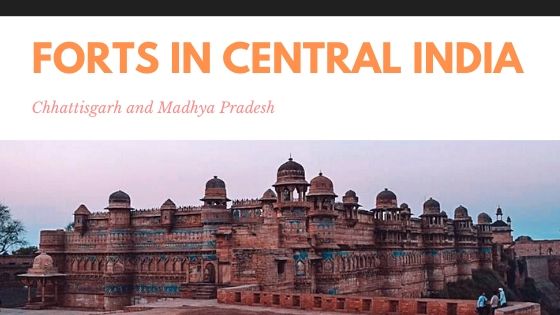
While most forts of North-West India are major tourist destinations, the ones in Central India are waiting for you to be explored. I distinctly remember walking through Orchcha Fort complex by the side of river Betwa, without a single tourist in sight!
My tribe of nomadic shoes, who graciously contributed to this article, tells me that it is no different elsewhere.
Hidden amongst Vindhya & Satpura range, most forts were impregnable with an added layer of security by Mother Nature. Among dense forests, built on a strong base of sedimentary rock beds, these forts were smaller compared to their Northern counterparts – but equally grand when it comes to the stories they tell!
Many of these forts were reclaimed by the very protective shield – nature. I have listed some which endured time & invasions, and some which are crumpling down, yet standing tall – as if it’s waiting to see us one last time!
See the complete list of Forts in India here:
Forts in Chhattisgarh
1. Kosagaigarh Fort
Recommended by : Akshita Parihar
Akshita documents i.e. photographs and writes about the folks in their natural element. A spiritual seeker and a nihilist at times left Bombay after working in the advertising industry as a copywriter for 4 years to dig in the culture of this country, the anthropology enthusiast also loves to illustrate, dance and hum Leonard Cohen and Johnny cash songs on the guitar.
One of the must-visit spot of Chhattisgarh is the district of Korba, standing at the confluence of the Hasdeo and Ahiran rivers. Korba not only holds a colossal treasure of minerals reserved deep into its mines but also holds the gem that not a lot of folks know about – The Kosagaigarh Fort.
Standing tall and proud on the hillocks of Putka Pahad at the height of 1570 ft, the sweeping spectacle of the entire district from the fort’s crown will leave you nothing but astounded. Enwreathed by lush walls of nature, the village of Kosagaigarh falls 25kms off Korba-Katghora road. The entry to this ancient structure is through a slender tunnel-like passage that leads to a splendorous architecture. The same tunnel was used as a defense technique to roll down heavy rocks on the enemies back in the days.
There is no special record of its history in the archives but the locals are always open to recount the folklores around it. Mysterious in a mesmerizing way, the fort of Kosagaigarh will make you want to admire it for hours sitting on some rock swathed with superfluous serenity.

2. Lafagarh Fort
Lafagarh Fort built by Kalchuri ruler Bahar Sai in the 14th century is around 75 kms away from Korba in Chhattisgarh. The fort complex is adorned with three main gateways – Humkara, Simhadwar and Menaka. Inside the fort, you will find a temple dedicated to Mahishasur Mardini, five ponds and Shankar cave.
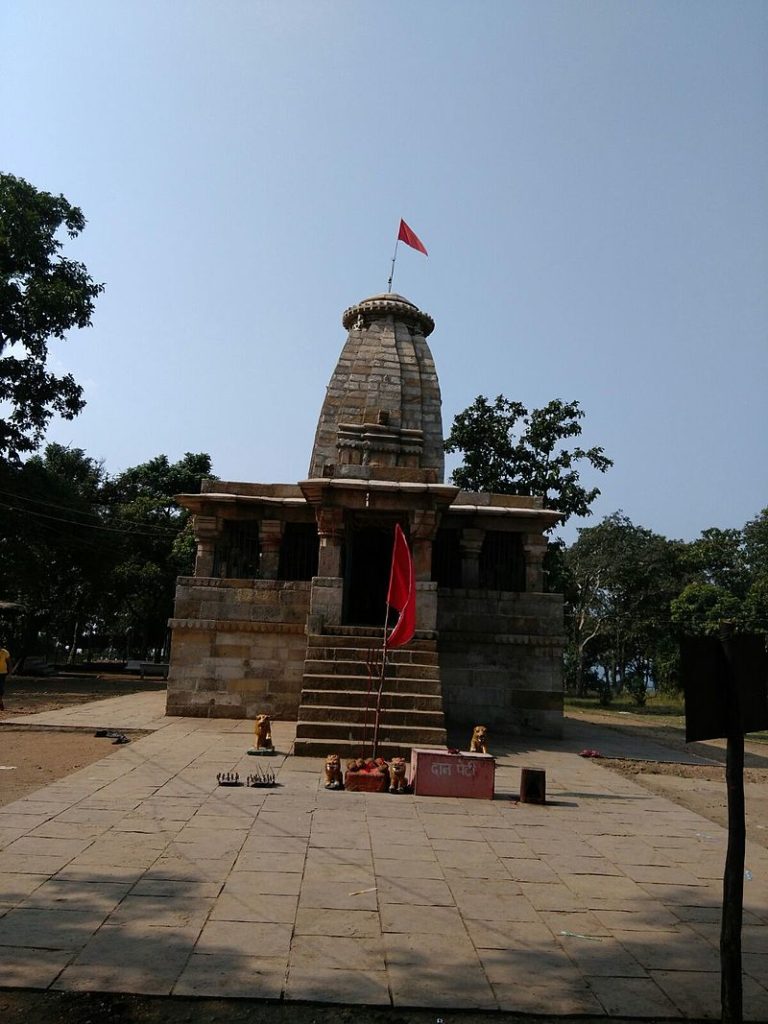
3. Ratanpur Fort
Recommended by : Akshita Parihar
Akshita documents i.e. photographs and writes about the folks in their natural element. A spiritual seeker and a nihilist at times left Bombay after working in the advertising industry as a copywriter for 4 years to dig in the culture of this country, the anthropology enthusiast also loves to illustrate, dance and hum Leonard Cohen and Johnny cash songs on the guitar.
If you unroll the scroll of the old capital of Chhattisgarh (Haihaivayanshi kingdom of the 1400s), the legends of the local king Jajjaldeva are inscribed on it. The writings speak about his ancestor – King Kalingaraja who dominated the Dakshina Kosala region and in further events, his grandson Ratnaraj founded Ratanpur which was eventually subjugated by the Maratha empire and at last by the Britishers.
The ancient city of wealth and a major hotspot for tourism now is settled 25kms away from Bilaspur. One can hop onto a train to Bilaspur Jn or take a flight to Raipur and then hire a cab down to Ratanpur and the Ratanpur Fort. Simple as that!
There may be enough words written about the intricately sculpted walls of Ratanpur fort but they cannot do justice to this rare masterpiece. You have to behold the sight of its magnificence to know it. Although, the fact that it has lost its original charm and elegance over decades cannot be eradicated yet it will lure you into the times of yore right from its entrance.
Guarded by the gorges from all sides, the entrance has four gateways. The first one being the Singh (Lion) Dwaar which is an assemblage of restored carvings of gods and goddesses along with a worn-out statue of a noble king. The other gates are Ganesh, Bhairav and Semar dwaars which are heavily ornated with beautiful carvings.
This fort is an example of fine skills and art practiced by the craftsmen of Haihaivayanshi kingdom. The Jagganath Temple, Lakshminarayan Temple, Hamam, Shiva Temple, Hanuman Temple, Palace Complex are found further ahead in the main area of the fort. The well-mused-over hamam (bath) was put together for the royal families to clean and heal before stepping into the sacred spaces.
I am sure, the history enthusiasts and architecture admirers won’t be able to resist themselves from visiting this epitome of magnificence.
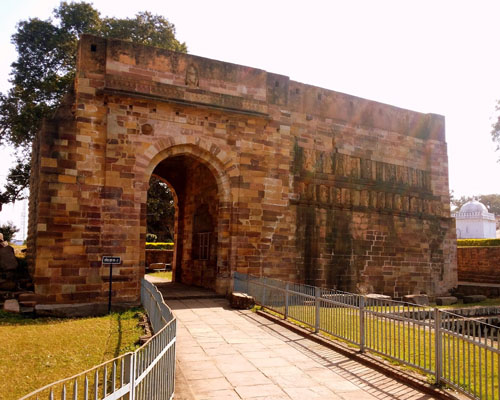
Forts in Madhya Pradesh
4. Ahilya Fort
Turned into a heritage property, Ahilya Fort met her fate like many other neglected forts around the world in 2000. Overlooking the Narmada river, this 250 years old fort belonged to Maratha queen Ahilya Bai Holkar.
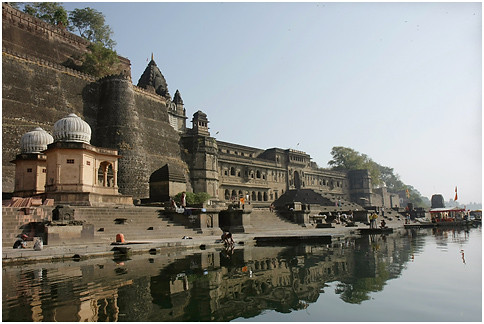
5. Ajaigarh Fort
The Chandella Kings built the Ajaigarh fort in the 9th century. The name of the fort originates from maharishi Ajaipala who resided on Kedar parvat. Presently the condition of the fort is in despair still one would imagine the splendour it once had. The most beautiful part of the fort is its detailed carving on stones and the intricately etched out motifs on sati pillars.
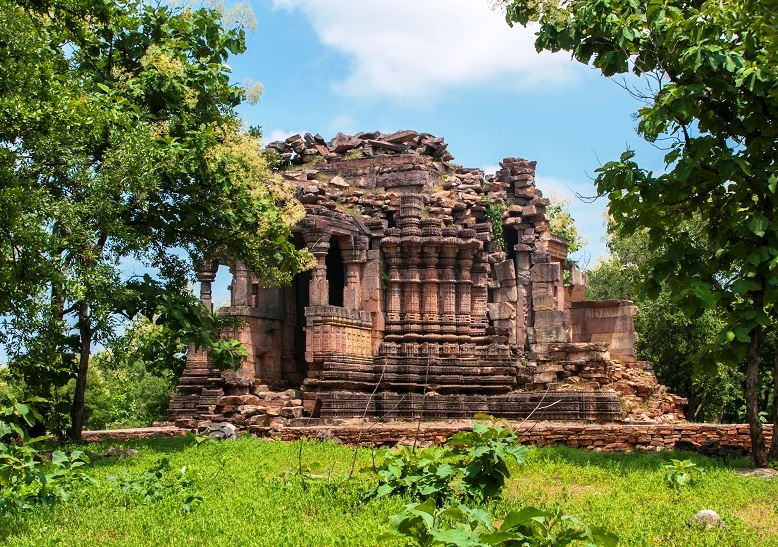
6. Asirgarh Fort
The fortress is perched on a crag of the Satpura range. The view from atop the Asirgarh fort is scenic and overlooks at the nearby quaint villages. The close-by Tapti and Narmada rivers adds to the beauty of the fort.
Considered as a ‘Gateway to Deccan’, Asirgarh fort was built by Asa Ahir, a herdsman and is one of the oldest surviving forts of India. The most appealing feature of the fort is a colossal bastion which was used for reinforcing the strong defence of the fort. There are two main entry points to the fort – Western side which was used by everyone and South-East side was used as a secret entrance.
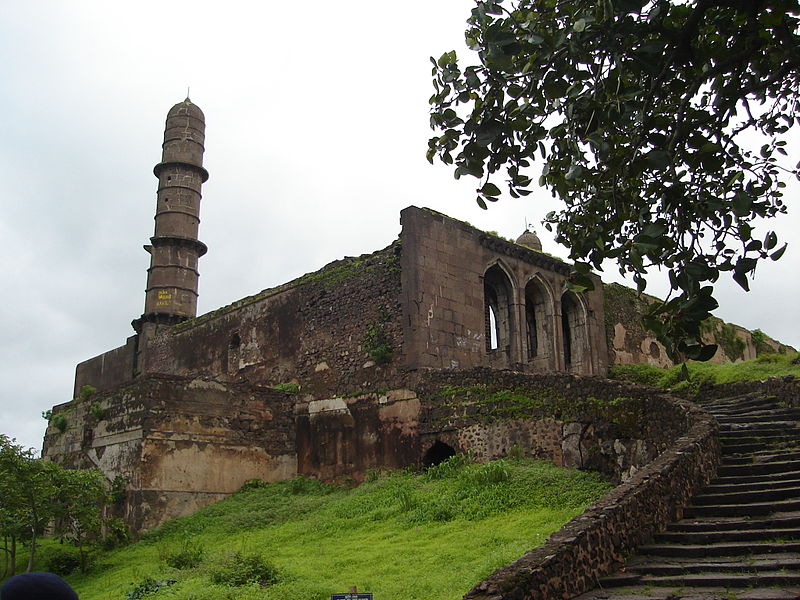
7. Baldeogarh Fort
Recommended by : Jay Mishra
Jay Mishra is a film maker and aerial cinematographer from Tikamgarh. Jay is working with an NGO called Healing Himalayas and devotes his time in nurturing the mountains of Himachal Pradesh.
The magnificence of Baldeogarh fort is an unforgettable sight. Standing tall beside the Gwal-Sagar tank, this fort is one of the lesser known forts in India. The town of Baldeogarh comes under Tikamgarh district in Madhya Pradesh and is famous for metal casting work.
8. Chanderi Fort
Chanderi is a forgotten town, known only for its fine quality sarees that are world famous. As a town, it is still living in its past. The narrow alleys, the architectural remains and the interaction with people will transport you to a different era.
The Chanderi fort was initially built by a Kirti Pal in the 11th century and later the fort complex was extended by future occupants, the Mughals and the Bundelas. The fort complex is best visited during sunset as the view from Chandragiri Hill gives a panoramic view of the town. There are three main entrances to the fort – Khooni Darwaza, Hawa Pur and Kati Ghati. Inside the fort area you can find a memorial dedicated to the famous dhrupad musician, Baiju Bawra, a Johar Smarak, a water tank, a palace, a Khilji Mosque and a Tomb of Hazrat Abdul Rahman.
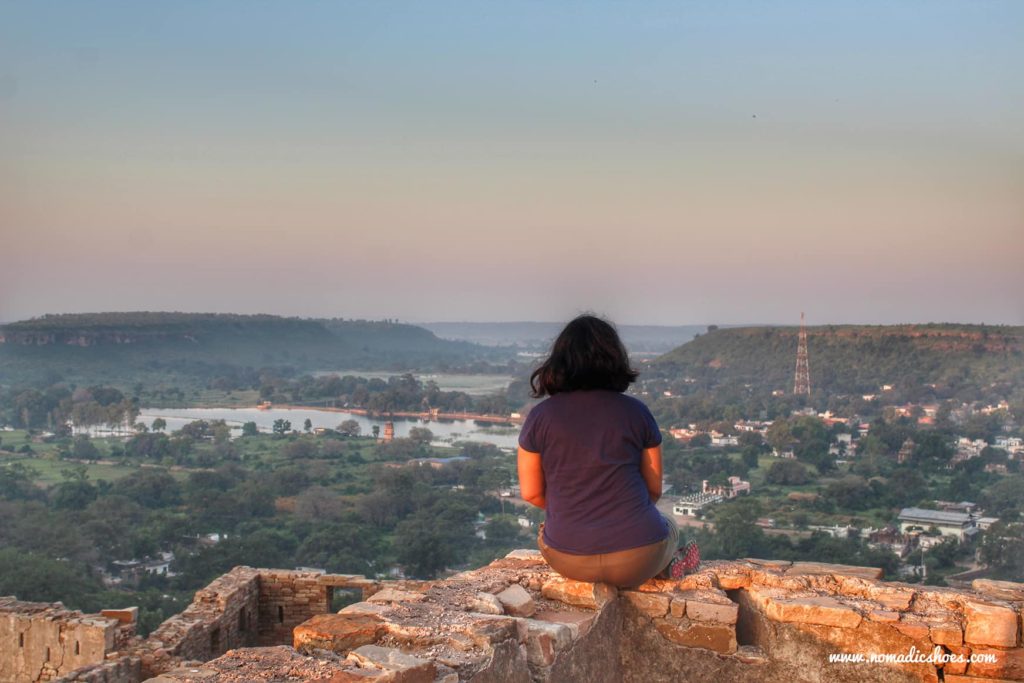
View of Chanderi town from the fort 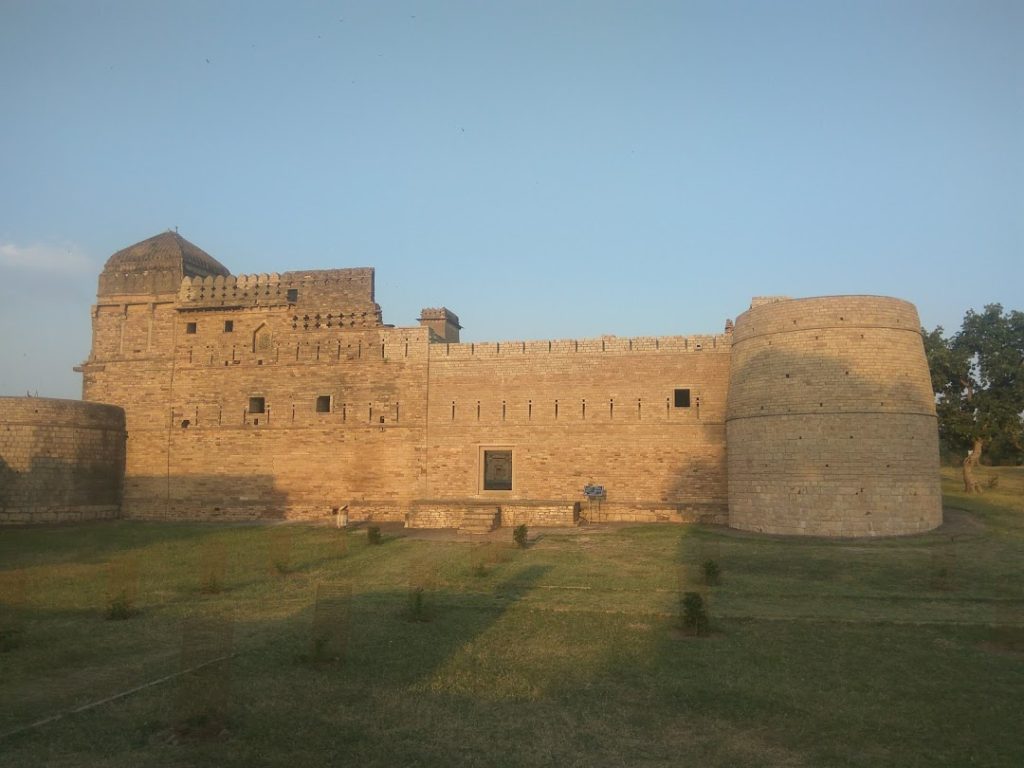
Chanderi Fort 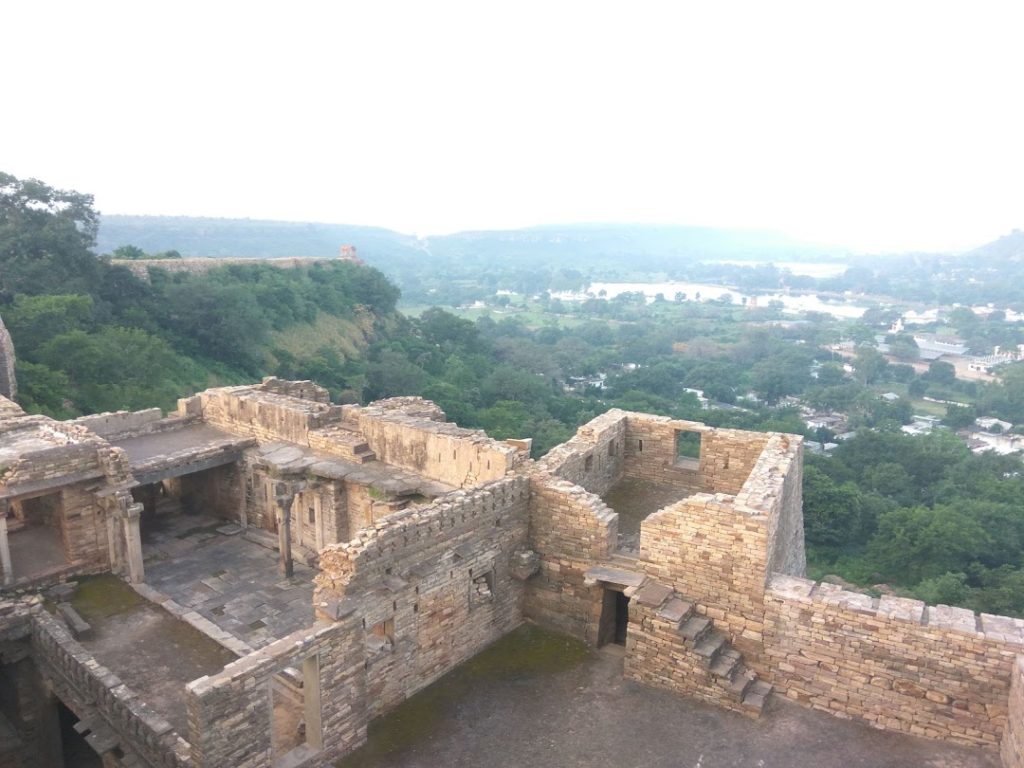
Ruins of Chanderi Fort
9. Dhar Fort
The fort at Dhar showcases the perfect blend of Indo-Islamic architecture in the Malwa region in Madhya Pradesh. This sandstone fort was built by Raja Bhoj I of the Paramars in the 10th century. Dhar fort has always been a safe place for people looking for refuge, starting with Anandi bai, mother of Peshwa Baji Rao II to the Indian revolutionaries during the First War of Indian Independence in 1857.
The fort complex includes palace of the Maharaja of Dhar, Kharbuja Mahal, Sheesh Mahal, a baoli and an open museum. Many structures inside the fort belongs to different eras – Tughlaq, Malwa Sultanate, Mughal, Maratha (Pawar), and British.
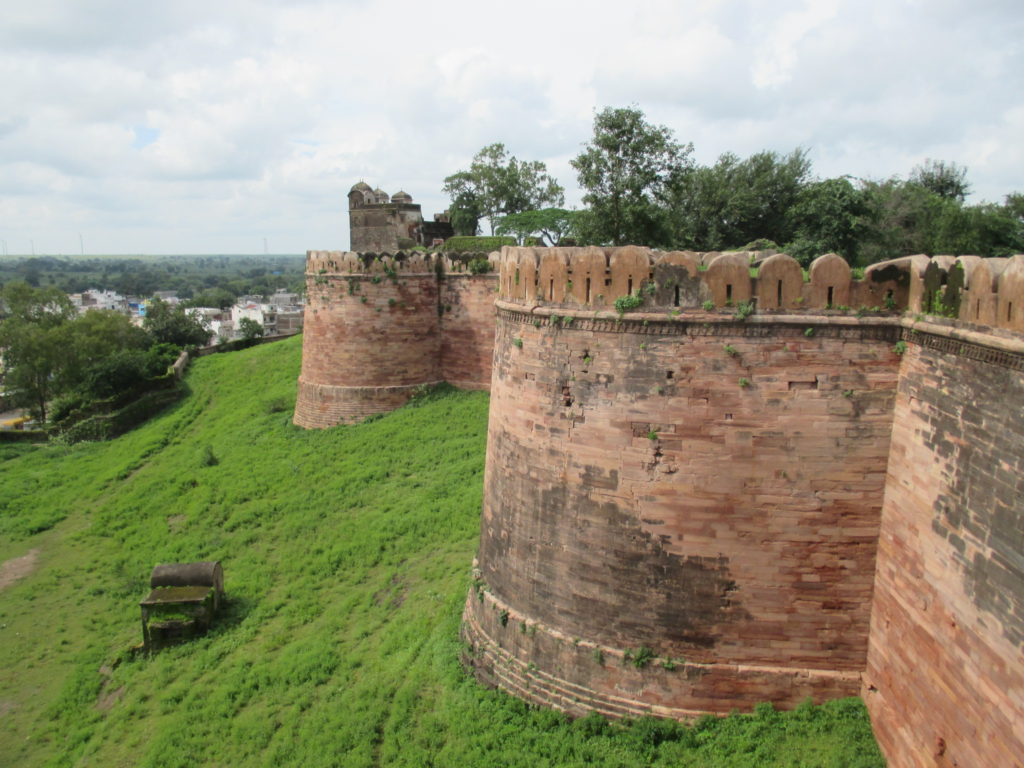
11. Gulganj Fort
Gulganj Fort is a lesser known fort in the state of Madhya Pradesh. Restortion work is going on at the fort so that it can be opened to tourists. This 18th century fort showcases the vision of Bundli architecture. It is perfect example of a ‘garhi’ which is local dialect means a small fortress near to a water resource atop a hill and surrounded by thick vegetation. The sole aim of building grahis were to safeguard the womenfolk in case of an emergency.
According to popular belief, the fort was built by Raja Sawant Singh who made it for his mistress Gulbai. There are many such forts in India which which are not grand in its size but they do hold a significant place in history.
11. Gwalior Fort
Recommended by : Anjali Chawla
Anjali is a story-weaver and a family travel blogger from Delhi. Her goal is to visit every corner of the world with her family. Antarctica remains her dream destination.
Rightfully named Gibraltar of India, Gwalior Fort is one of the most unconquerable forts in India. Perched on Gopachala parvat, the fort is known for its intriguing history and architecture. Legend has it that Raja Suraj Sen built this fort as a tribute to Sage Gwalipa, who cured him of leprosy.
Since its inception, the fort saw many rulers from Kachwaha Rajputs, Qutubiddin Aibak, Tomars, Mughals, Marathas to Britishers, and Scindias. Babur, upon first seeing the fort named it the pearl amongst the fortresses of India. The fort still echoes the stories of courage and bravery of Rani Laxmi Bai, who gallops up to Gwalior Fort to reclaim it, single-handedly.
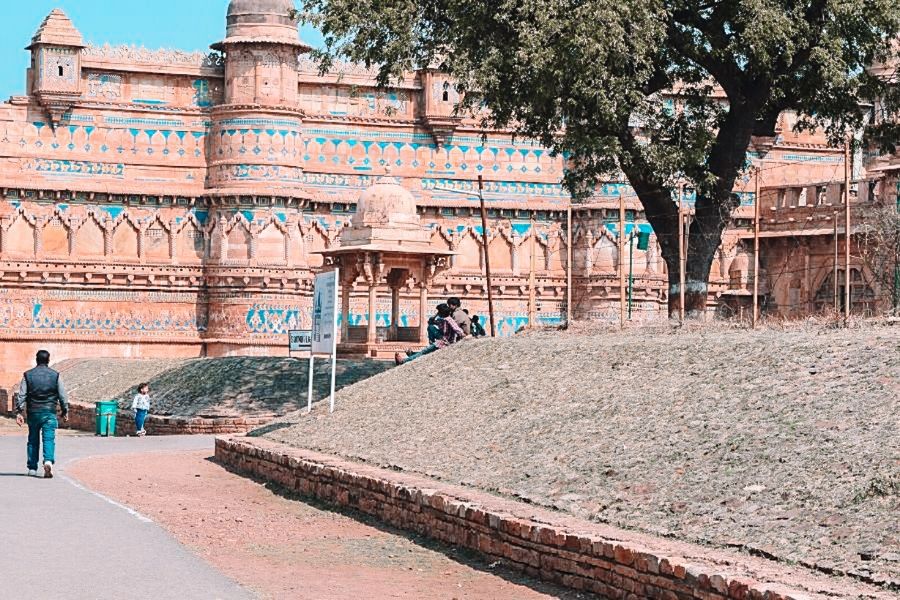
Gwalior Fort 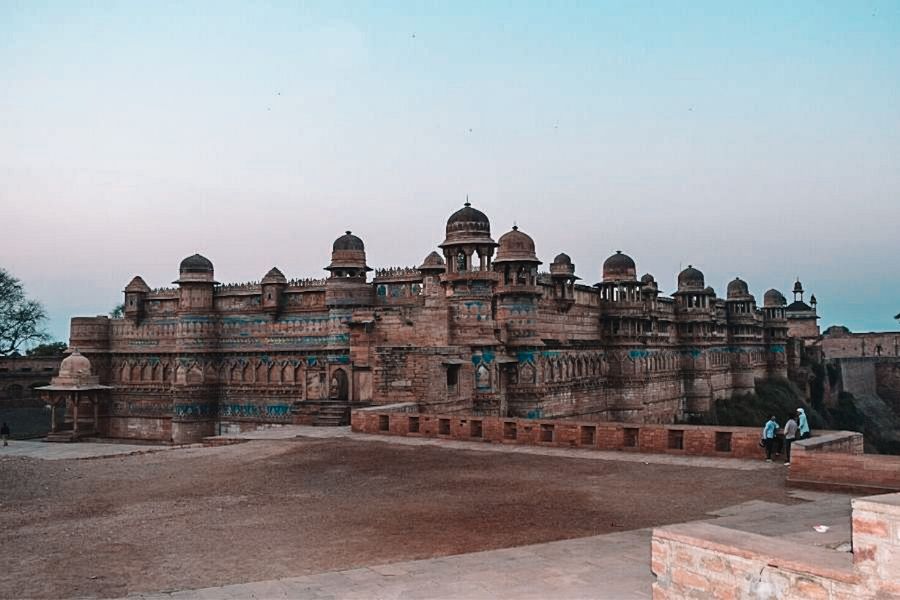
Gwalior Fort
The Gwalior fort is accessible via two entrances – the western entrance (Urvai Gate) and the eastern entrance (Gwalior Gate or Quila Gate).
You can drive to the fort from Urvai Gate, but Gwalior Gate is only for pedestrians. The Statues of Jain Tirthankaras are worth-stopping by along the Urvai Gate.
Man Mandir Palace, built by King Man Sing Tomar,is one of the most stunning palaces to explore inside the fort. The intricate motifs, carvings, and sculptures spell beautiful. Other impressive monuments inside the Fort complex are Karan Mahal, Vikram Mahal, Jahangir Mahal, Shahjahan Mahal, and Chhatri of Bhim Singh Rana.
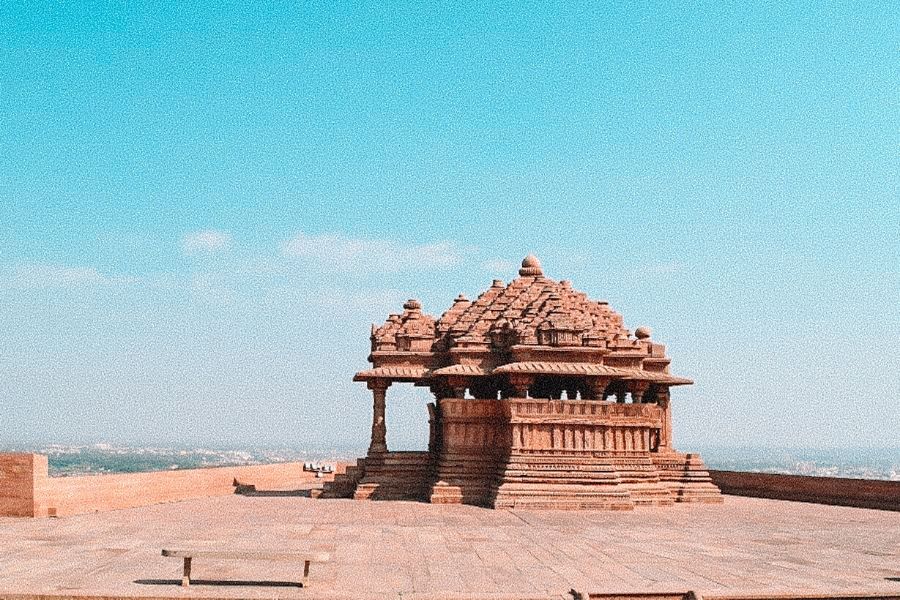
Temple inside Gwalior Fort 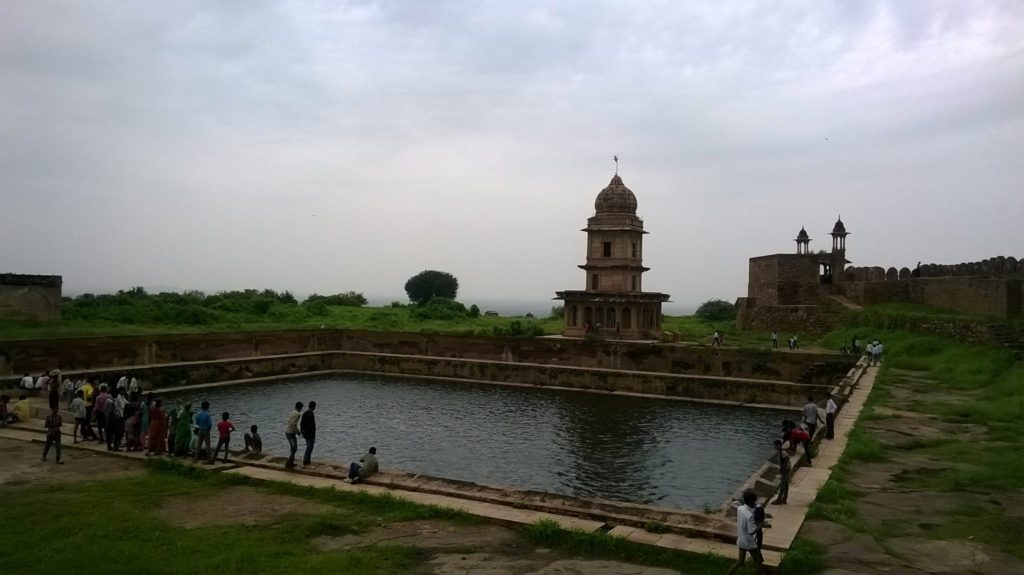
Pond inside Gwalior Fort
Gujari Mahal, a palace-turned-museum at the foot of Gwalior Gate, narrates the story of Gwalior and its varied rulers. That’s not all. The fort is home to some of the most beautiful temples in India, like Teli-ka-Mandir, Saas-Bahu temple, Sun Temple (the replica of Konark Temple), and Chaturbhuj Temple, aka Temple of Zero.
The Fort Complex at Gwalior is massive. You’d need an entire day to explore the fort and its monuments. I recommend hiring a licensed guide to dive deep into the history of the fort to make your visit worthwhile. End your historical expedition with the mesmerizing Light and Sound Show, where the vibrant shades of light conjoin the baritone voice of the Bollywood legend, Amitabh Bachchan, to present the history of Gwalior Fort.
12. Orchha Fort Complex
A `secret place`, Orchha does justice to its name, a small relaxed town 15 kms away from Jhansi [Uttar Pradesh] in Madhya Pradesh is a perfect weekend spot for people looking for some calm.
Not many people know about this place, it is still away from the grip of over-tourism. This rural town takes you back in time with its exquisite murals and diverse architecture. Walking is the best way to explore the Orchha Fort Complex and if you are a lover of history then don’t miss the light and sound show inside the Fort.
Built by the Bundela Rajputs, Orchha Fort Complex houses the Ram Raja Temple, Phool Bagh, Chaturbhuj Temple and Jahangir Mahal. Do visit them for the love of history, roam around the village and eat with the locals, take a walk around the 14 Chhatris [Cenotaphs] along the Betwa river. According to me, Orchha fort is one of the most underrated forts in India. So, if you get a chance to visit Madhya Pradesh, make sure that it is on your list.




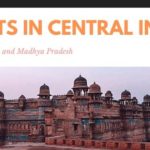
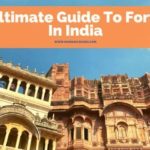
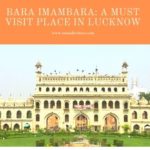




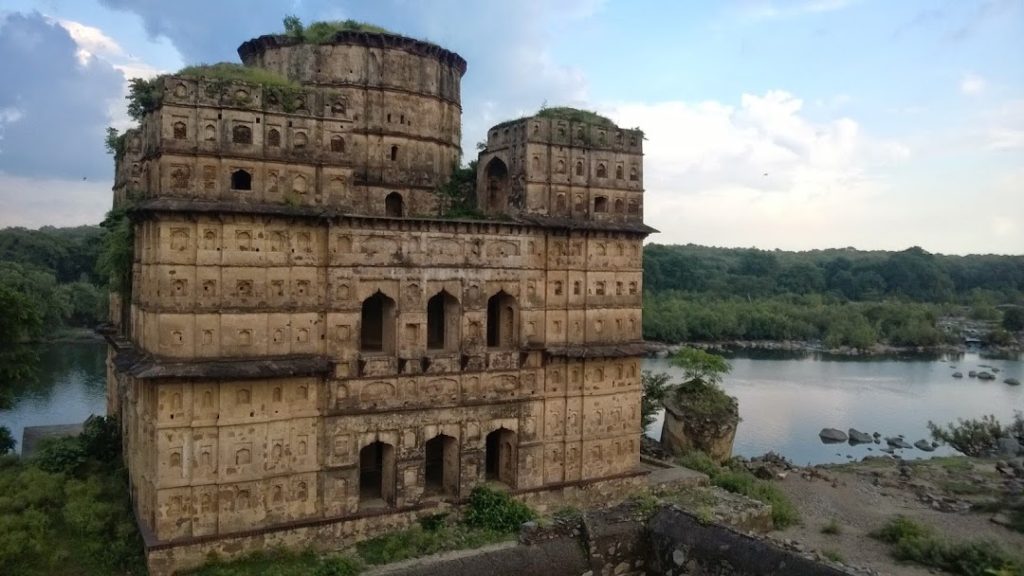
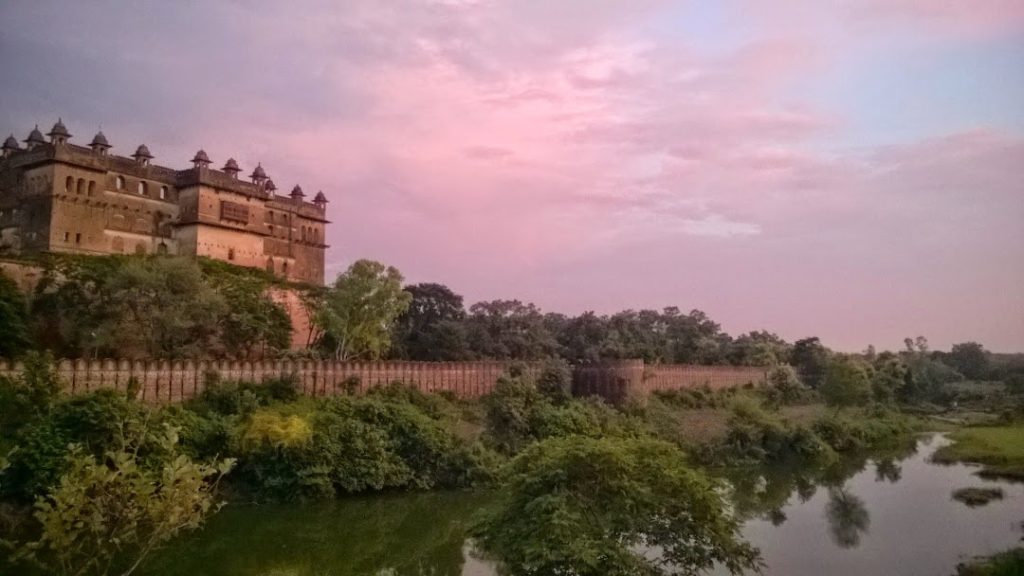
Awesome
Thank you dear.